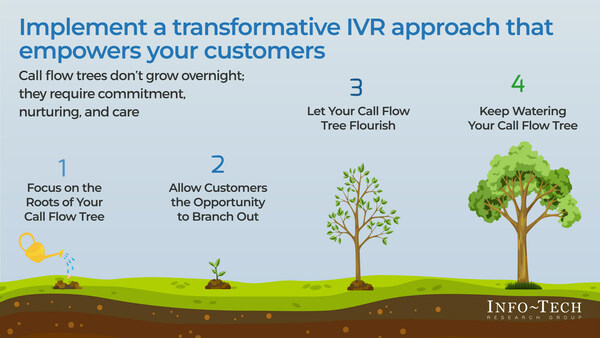Customers Still Prefer Voice Support
Despite the notion that phone support and interactive voice response systems are declining in popularity, consumers often prefer receiving customer service over the phone rather than through digital means, such as chat or email, according to a new report from Info-Tech Research Group.
However, integrating IVR technologies presents unique challenges for IT departments, such as managing increased complexity in developing a top-tier IVR strategy.
"An organization's IVR approach can make or break their customers' experience," says Austin Wagar, research analyst at Info-Tech Research Group. "The feelings customers are left with after interacting with contact centers and support lines have a major impact on their future purchase decisions."
Info-Tech's research highlights the increasing demand for effective IVR in contact centers as customer satisfaction becomes a top priority. However, with an overwhelming number of IVR and advanced technologies in the market, organizations can find it challenging to identify and implement a strategy that resonates with their customers, it found.
Additionally, many companies do not have a clear understanding of what truly drives their customers' calls to their IVR, according to the firm.
As IVR-related queries continue to increase, IT departments should take the time to get a comprehensive understanding of IVR requirements and capabilities, it said.
Info-Tech recommends building a database with the most common customer call types to guide the selection and implementation of technology solutions. This database can then serve as an outline for the call flow tree.
To further enhance the IVR experience, it's vital for IT leaders to understand and apply operational best practices, such as organizing call menus appropriately and using self-service applications. These practices, Info-Tech says, can help improve IVR metrics and positively impact the customer experience. Additionally, being aware of emerging trends and technologies, such as personalized service, natural language processing, and conversational AI, can help organizations stay ahead of the competition.
To enhance the customer experience, Info-Tech recommends organizations implement a transformative IVR approach that empowers customers. To achieve this, business leaders can apply the following approach to their strategy:

- Focus on the Roots of Your Call Flow Tree:To build a strong call flow tree, start by understanding customers' needs and the organization's goals before creating the IVR menu.
- Allow Customers the Opportunity to Branch Out: Empower customers by directing the call flow tree to self-service applications where possible and to live agents when necessary.
- Let Call Flow Tree Flourish: Integrate the IVR with other relevant business applications and apply technological developments that align with the needs of customers and the organization's goals.
- Keep Watering Your Call Flow Tree: Elicit feedback from relevant stakeholders and develop an iterative review cycle to identify and implement necessary changes to the call flow tree to ensure continued growth.
Beyond that, seeking caller feedback makes them feel valued while also obtaining actionable insights. By gathering this information, organizations can gain a deeper understanding of their customers' needs and identify areas for improvement, including targeted changes that can strengthen their IVR systems, Info-Tech concludes.